Imagine traveling ancient paths, discovering incredible landscapes, and enjoying the freedom of pedaling. Yes, we’re talking about cycling the Camino de Santiago, a way to enjoy the Jacobean routes on two wheels. But before embarking on this adventure, do you know how to prepare properly? Keep reading and discover everything you need to know for your successful training to cycle the Camino de Santiago.
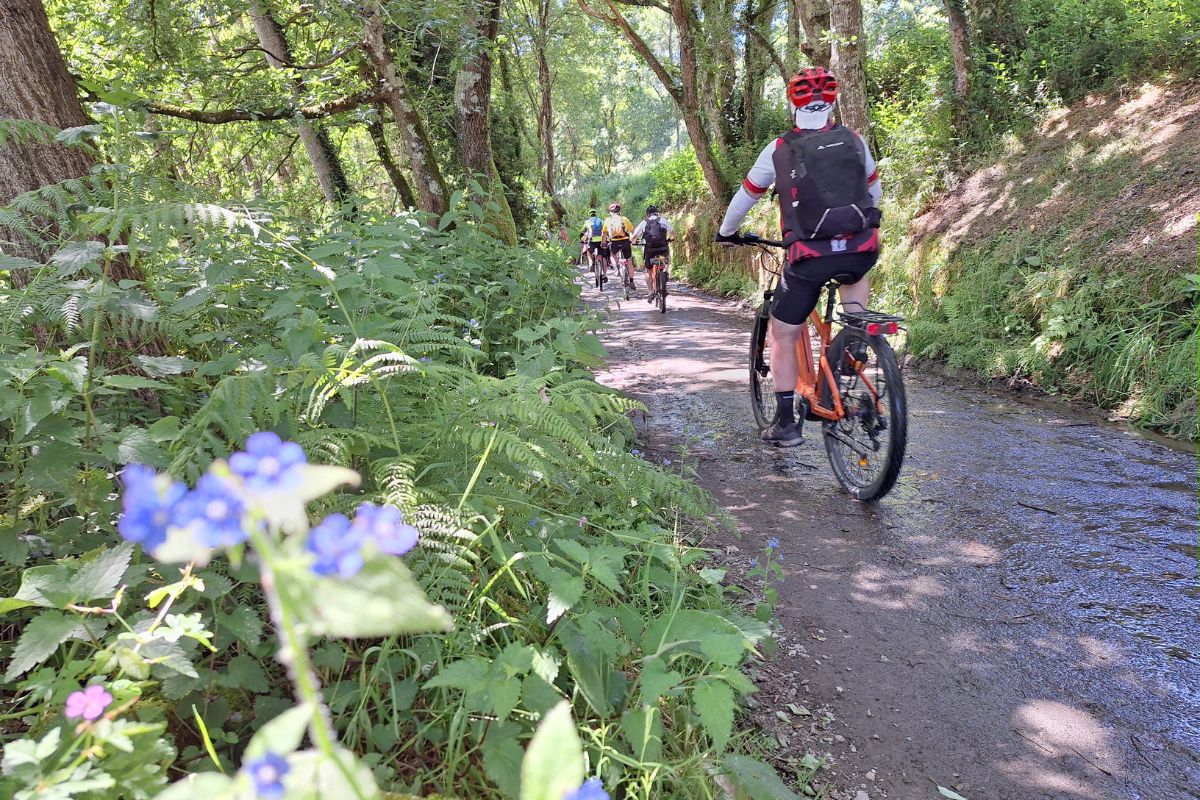
Cycling the Camino is an amazing experience, but it requires some prior training
Why is cycling the Camino de Santiago a great idea?
Cycling the Camino is a fantastic plan for holidays or days off, especially if you love cycling. One of the advantages of cycling the Camino de Santiago is that you can cover more kilometers in less time than on foot. This way, you can complete long routes in one or two weeks.
It’s also a fantastic way to explore Spain through various routes, from east to west and north to south. In short, it’s an excellent physical activity that improves your health and stamina while allowing you to discover different places and landscapes along the way. Need more reasons to cycle the Camino de Santiago?
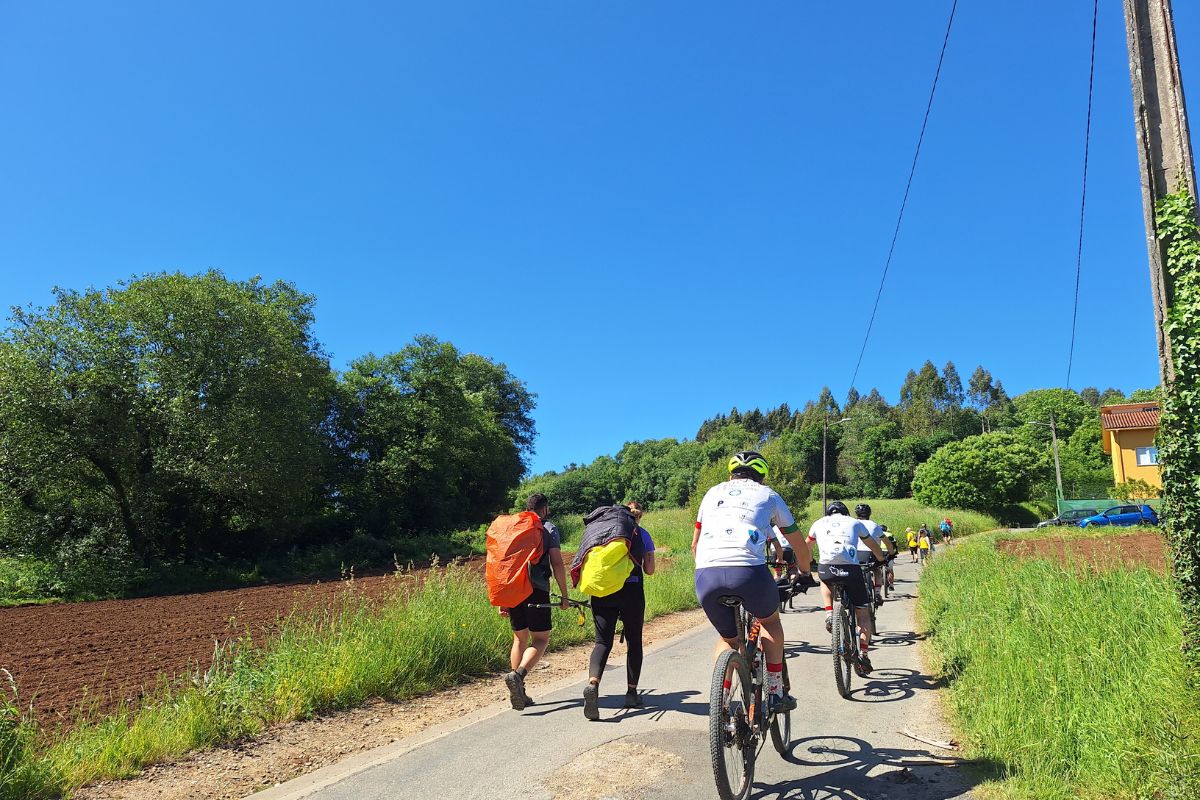
Pilgrims and cyclists coexist harmoniously on the Camino
What to consider when deciding your route?
Many people insist on cycling the Camino without sufficient technical or mountain biking experience. This journey is far from a casual weekend outing.
Keep in mind that for at least a week, you’ll be pedaling a considerable number of kilometers through forest tracks, paths, and trails. Generally, they are in very good condition, although you might encounter gravel, rocks, or tree roots at times, requiring extra caution. Another factor to consider is rain during the Camino, which can muddy the paths. Additionally, the various routes feature steep climbs and descents that will test you and sometimes require dismounting.
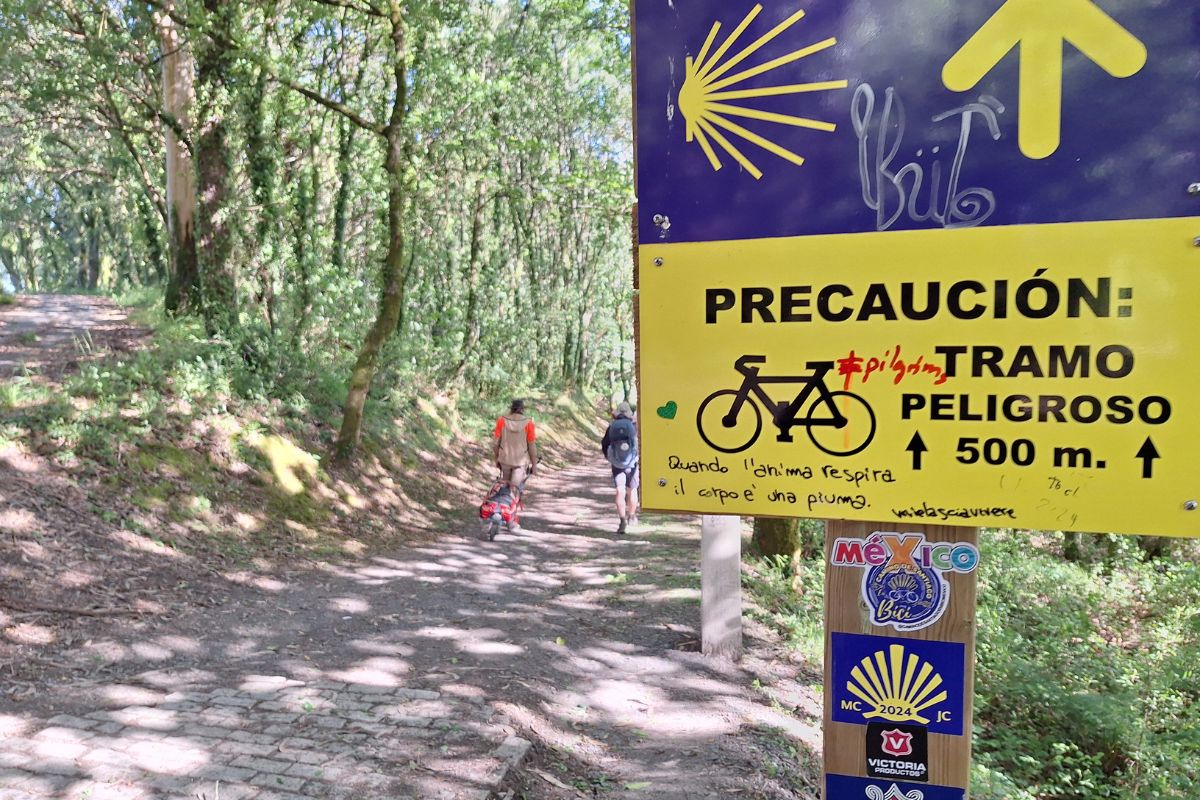
The Camino has adequate signage for both pilgrims and cyclists
Additionally, there’s the accumulated fatigue as the days go by, not to mention the added weight of your luggage in the saddlebags. If this is your first time as a “bicigrino,” assess your physical condition and cycling experience before embarking on the adventure.
Terrain and difficulty
Knowing the difficulty of the route is crucial before starting: not all routes are the same, and some are more challenging than others. As mentioned, the terrain can vary from flat and smooth paths to steep and rocky trails. If you’re a beginner, you might prefer easy, short, and scenic routes to ease into pilgrimage cycling.
Scenic beauty
Each route offers different views: some take you through dense forests, others along the coast with sea views. Knowing which route of the Camino de Santiago to choose and being motivated to travel it can make the experience much more rewarding.
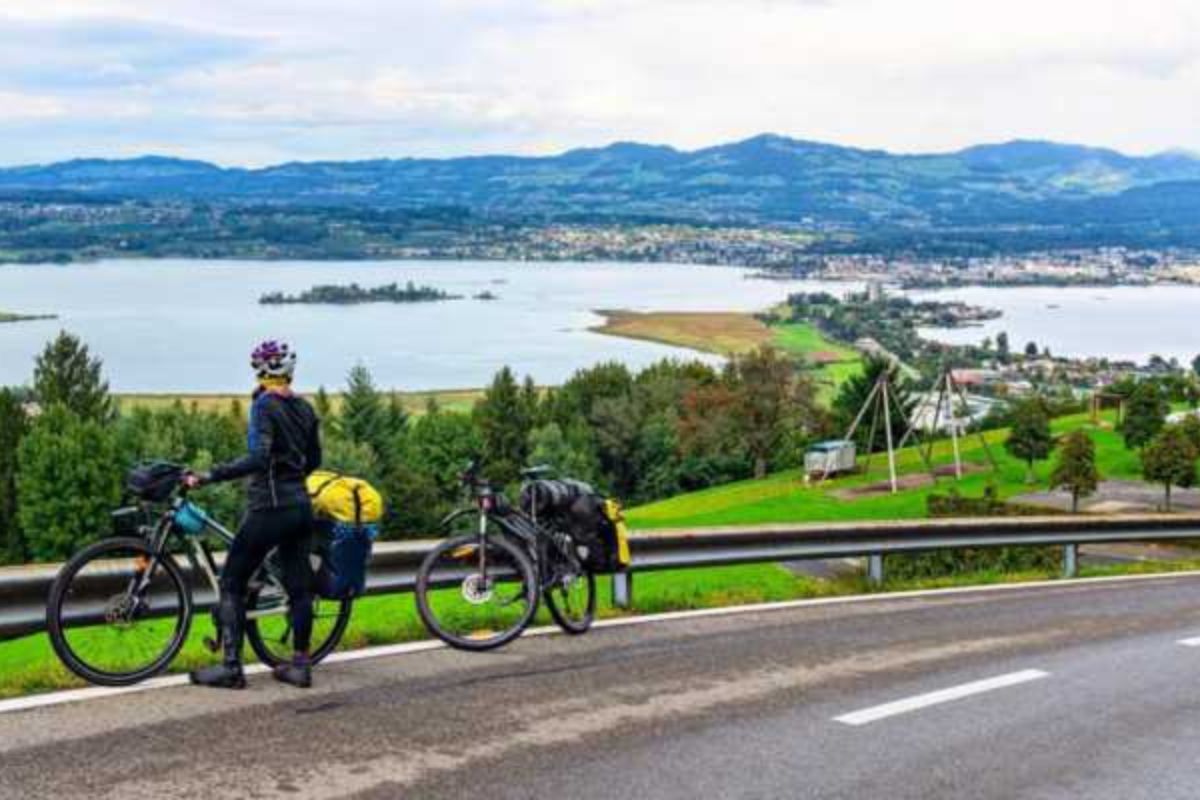
Apart from personal rest, the landscapes and views of the Camino will also force you to dismount occasionally
Local gastronomy
An essential part of the Camino is enjoying local cuisine, as the different routes pass through regions with unique gastronomies. From Galician gastronomy and flavors from the northern Iberian Peninsula to Spain’s best wines, the food on the Camino is sensational. And of course, upon finishing the Camino, celebrate at any of the best bars and restaurants in Santiago de Compostela.
Tips before cycling the Camino
The condition of your bike, your physical training, your luggage, and your safety are elements of your cycling journey that you must consider beforehand.
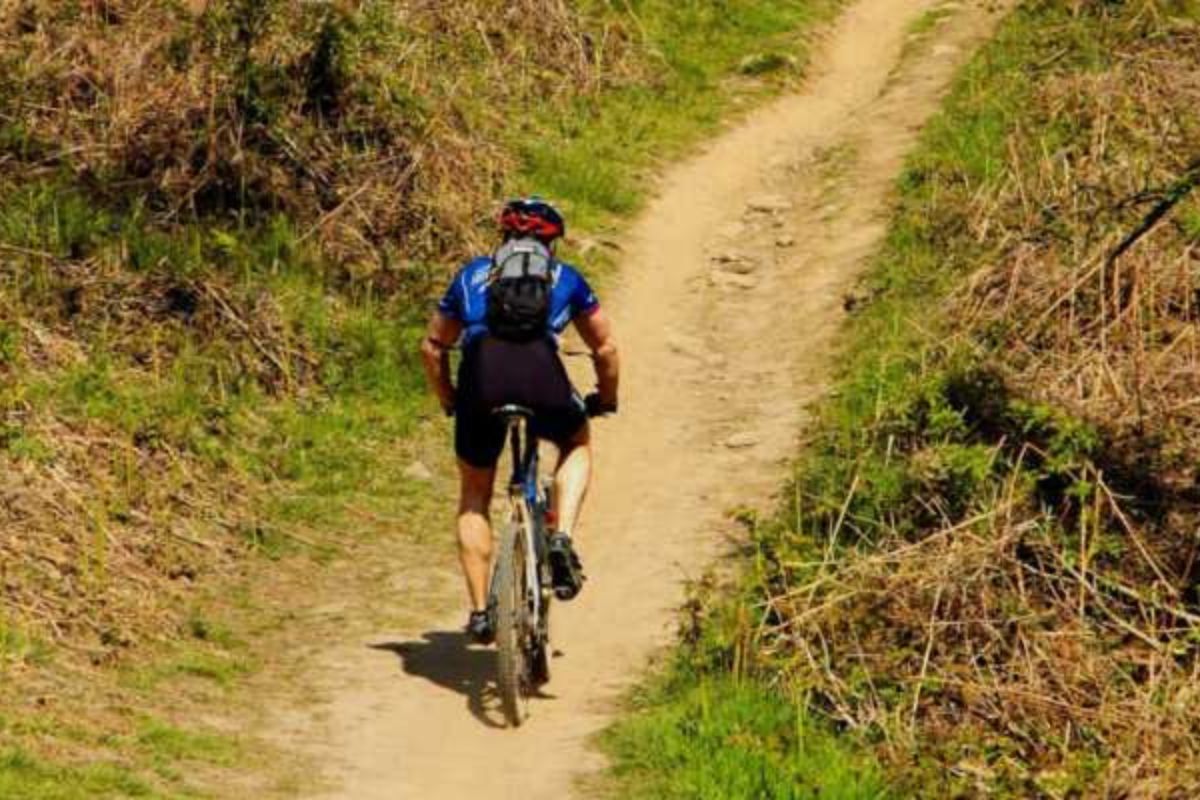
Future “bikegrim” training
Prepare your bike
If you’re reading this, you probably already have a bike, and for cycling the Camino de Santiago, a mountain bike is highly recommended. If you don’t have one or prefer another type, you can also rent one, for example, with us!
If you bring your own bike, make sure it’s in perfect condition and, if necessary, visit your trusted bike shop. Conduct a complete check of brakes, tires, chain, and gears to avoid future mechanical problems on the Camino.
Train properly
Physical and cycling training is highly recommended, starting at least a month in advance. Begin with short rides and gradually increase the distance, going out two or three times a week or taking advantage of weekends.
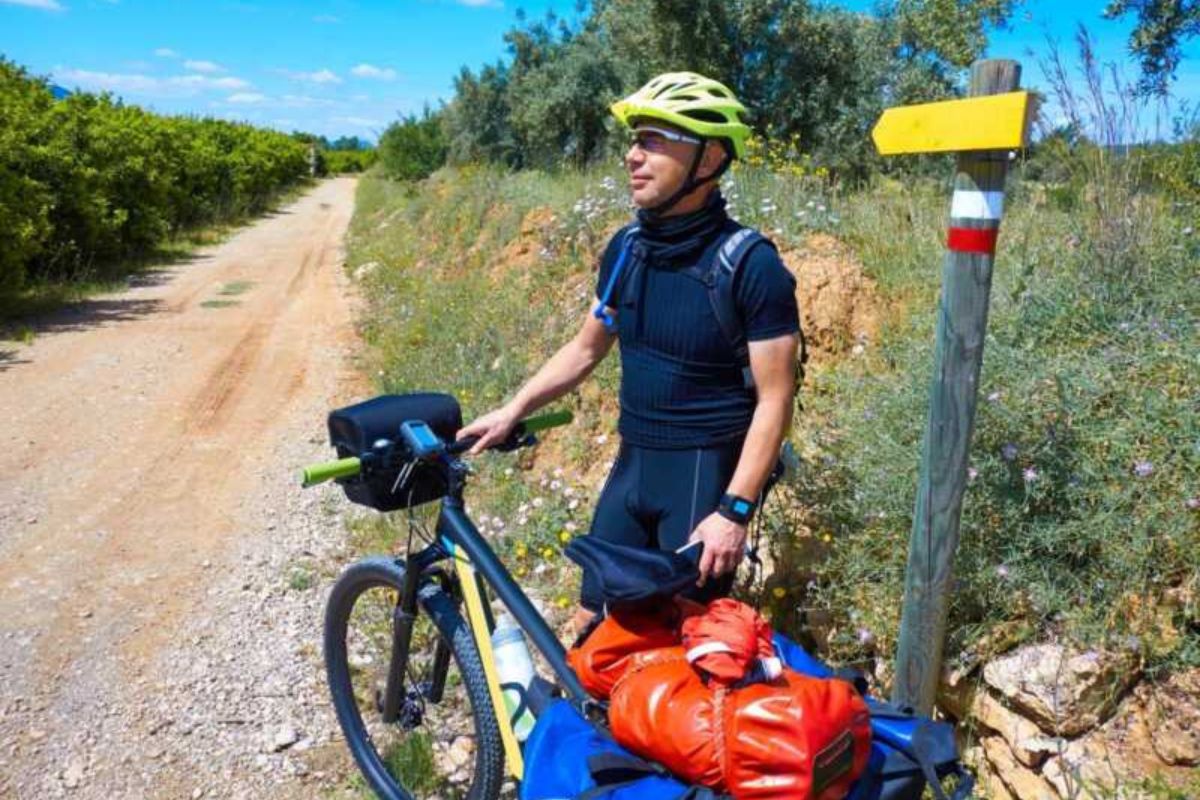
Cyclist preparing for the Camino with his bike
A comprehensive Camino training regimen involves practicing on terrain similar to what you’ll encounter on the Camino, including climbs and descents. And by the way, one day you can practice carrying weight, like the saddlebags you’ll carry during the Camino.
Lightweight luggage
Pack only the essentials and avoid excessive weight in your luggage, as lighter luggage will allow you to pedal more easily. Prioritize comfortable clothing, basic repair tools, and energy provisions. Oh, and don’t forget a bell or horn to announce your approach to pilgrims on foot.
Hydration and nutrition
Stay well hydrated and nourished, and remember to bring enough water and energy snacks. Plan your stops to recharge and enjoy local cuisine. During the Camino, you’ll find drinking water sources, as well as bars and shops where you can stock up.
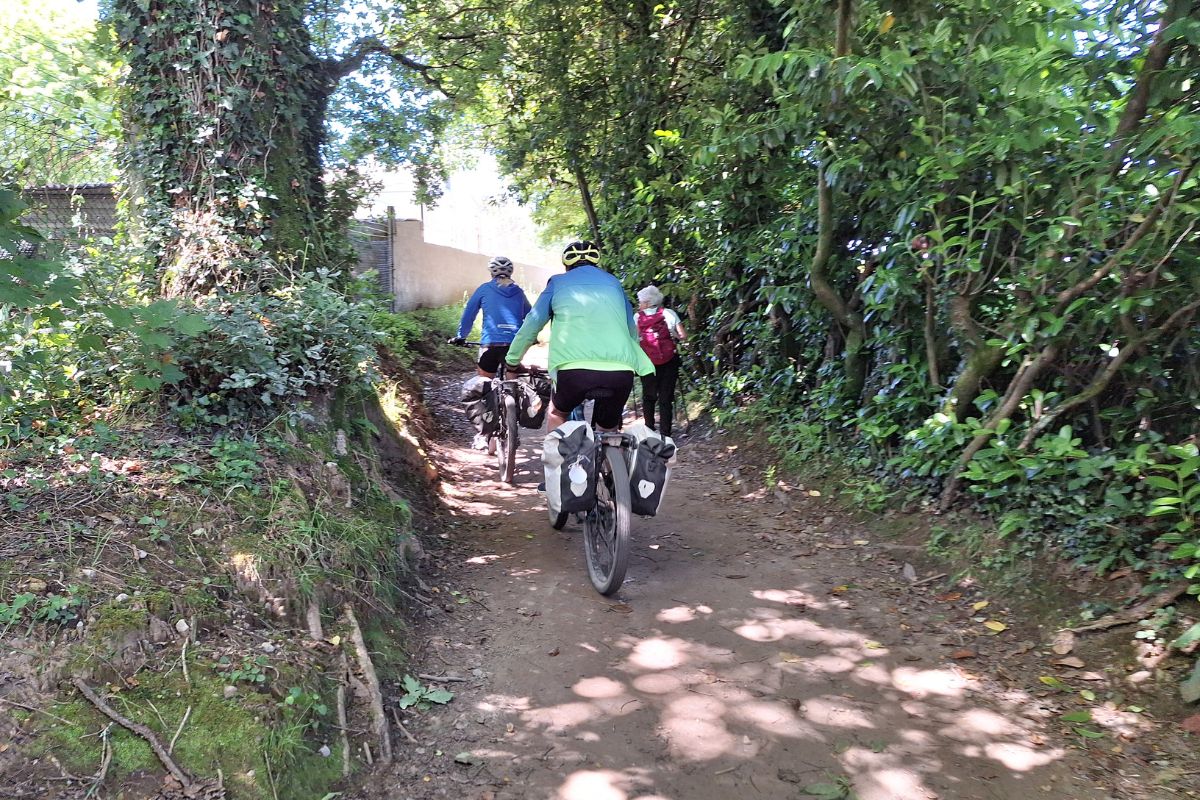
Being well equipped is crucial, whether you’re walking or cycling the Camino
Safety first
Always wear a helmet, as it’s vital for your safety. Additionally, carry lights and a reflective vest, especially if you plan to cycle at dawn or dusk. Safety is one of the key elements to prevent injuries from accidents and to take care of your health.
Which routes are recommended for cycling the Camino de Santiago?
There are several popular routes for cycling the Camino de Santiago. If, in addition to the experience, you want to obtain the Compostela certificate, you must complete at least the last 200 km of an official route. Here are some of the most recommended:
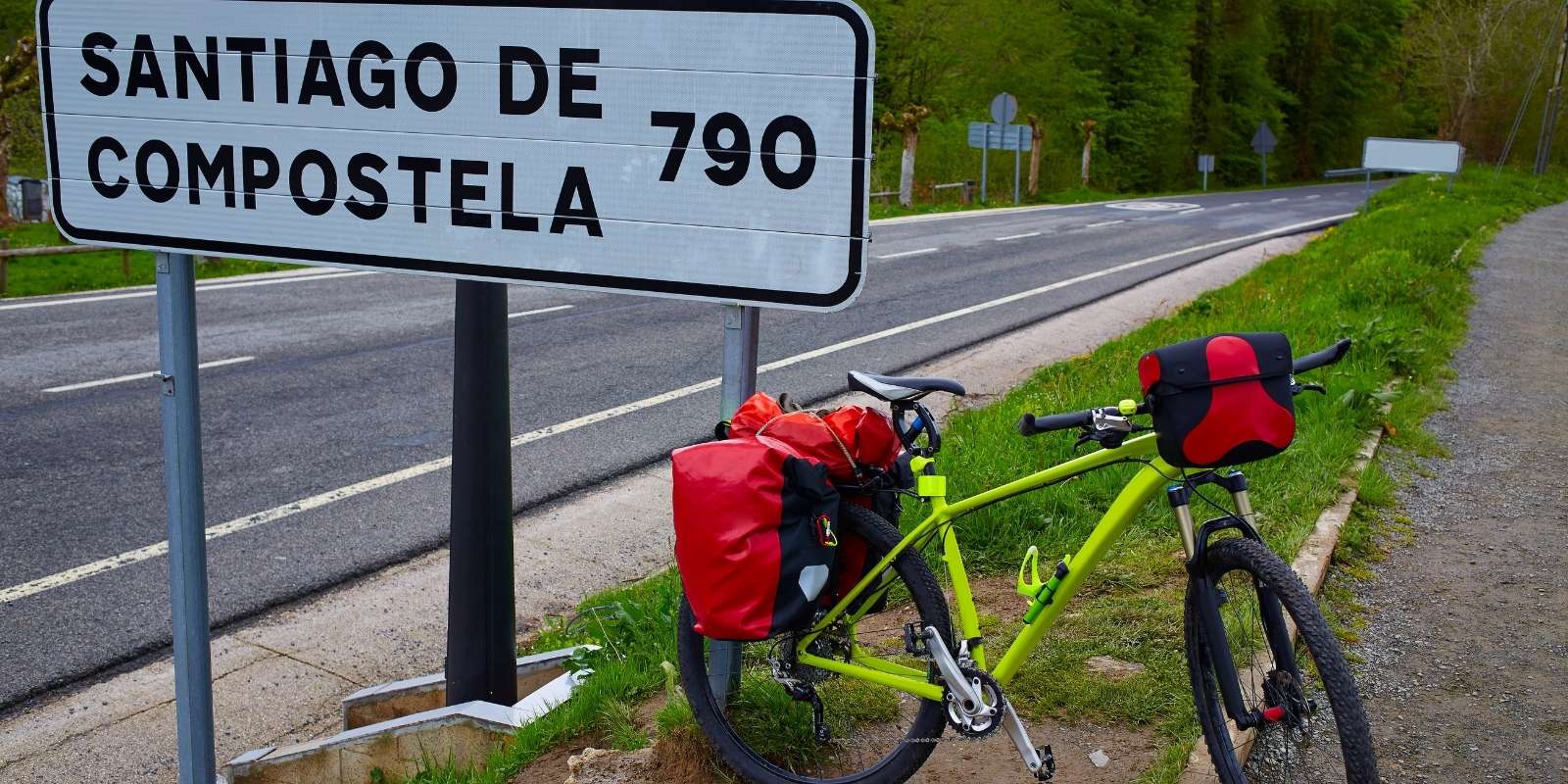
All Jacobean routes are suitable for cycling
French Way
This is the most popular route, offering a perfect blend of landscapes, history, and services for pilgrims. It’s ideal for both beginners and experienced cyclists, and we recommend cycling the last 200 km from Ponferrada.
Northern Way
Crosses the northern coast of Spain, offering spectacular sea views and a cooler climate. It’s slightly more challenging due to its rugged terrain. In this case, we recommend starting the Northern Way by bike from Gijón, with a mix of Asturian coastal and Galician inland landscapes.
Portuguese Way
Starts from Lisbon and passes through beautiful Portuguese cities and green landscapes, crossing rivers like the Douro or the Miño. It’s the second most traveled route, and in this case, we recommend the Portuguese Way from Porto.
Portuguese Coastal Way
Similar to the previous one, it starts from Portugal and upon arrival in Porto, offers a very refreshing alternative along the coast. A very friendly route in terms of terrain, where significant gradients are not expected.
Via de la Plata
One of the longest routes, starting from Seville. You’ll cross very varied landscapes, from arid areas to green mountains. It’s an option for more experienced cyclists, and we recommend doing it outside the summer months due to excessive heat.
Finisterre Way
You’ve reached Santiago, and you still want more! Well, this is the solution: cycle the Camino de Santiago to Finisterre and reach the mythical end of the world.
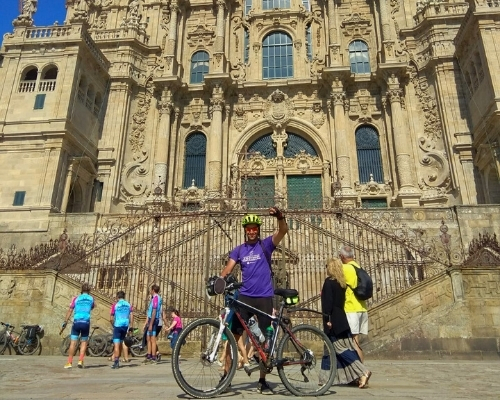
A bicigrino after completing his Camino de Santiago by bike
Are you ready to embark on this unique adventure? Don’t wait any longer! Prepare your bike, train properly, and choose the route that inspires you the most: we’ll take care of the rest. Discover the magic of cycling the Camino de Santiago and live an unforgettable experience. Start your Camino training today and pedal towards your next great adventure!

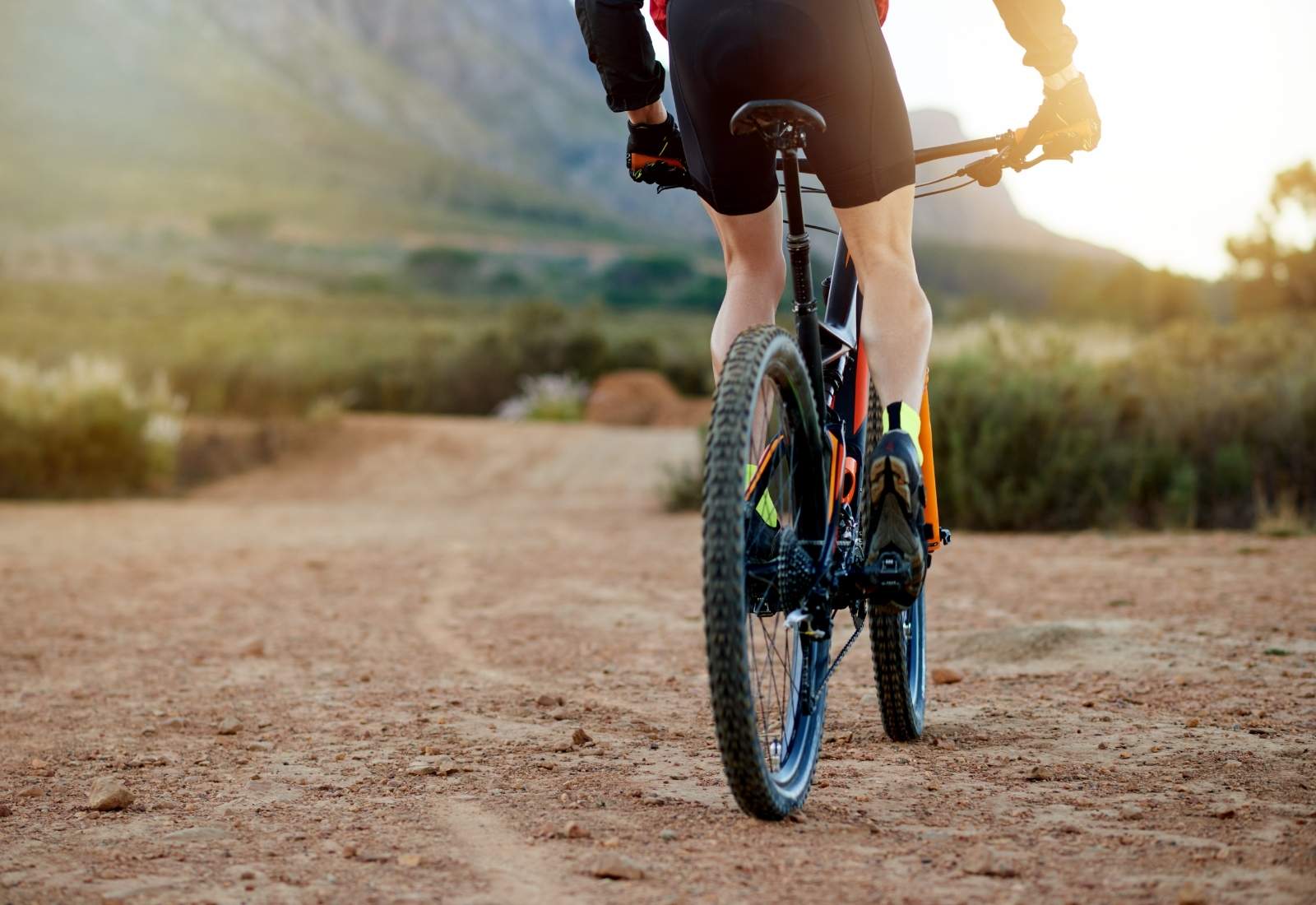










Leave A Comment